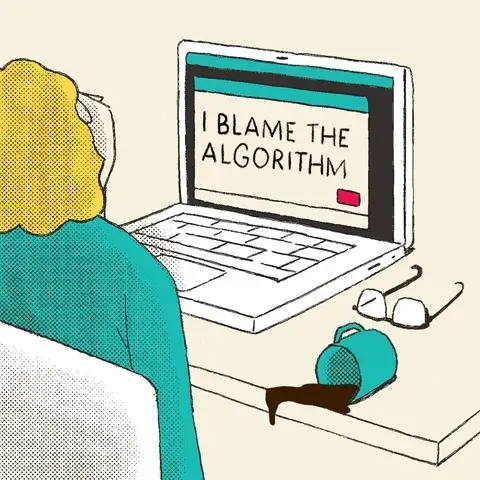Did you know that artificial intelligence can make mistakes that seriously affect your business? AI hallucinations are those moments when AI models generate incorrect or misleading information. For small and medium-sized enterprises (SMEs), this can result in the loss of customers, costly mistakes, and damage to reputation.
Sometimes, AI can be like that cousin we all have, the one who, when they don't know something, just makes it up. While this can be funny at a family gathering, it's not amusing when it comes to business decisions.
In this post, we will explain what AI hallucinations are, why they are dangerous, and how you can prevent them. From ensuring data quality to implementing human oversight, you will discover practical strategies to keep your AI functioning correctly.
Make the most of your AI and avoid unnecessary mistakes!
What are AI hallucinations? Defining the phenomenon
AI hallucinations occur when an artificial intelligence model generates incorrect or misleading information, as if it were making things up.
If a customer service chatbot, when asked about the status of an order, responds that your package has been sent to Jupiter🪐, it's not a big deal, but this phenomenon is particularly concerning in applications where accuracy is crucial, such as customer service, medicine, or cybersecurity.
Worrying examples of AI hallucinations
- Home voice assistants: A famous case occurred when Alexa, Amazon's virtual assistant, suggested to a girl to insert a coin into an electrical outlet as part of a "challenge." This type of error can lead to extremely dangerous situations and highlights the importance of having well-supervised AI systems with proper safeguards.
- Medical diagnostics: Imagine an AI system used to interpret medical test results that, instead of correctly identifying pneumonia, diagnoses the patient with a completely different and rare disease. This type of hallucination could not only delay appropriate treatment but also lead to unnecessary and dangerous interventions.
- Cybersecurity: An AI model used to detect cyber threats could mistake normal network traffic patterns for a cyberattack, or worse, fail to detect a real attack. This could leave a company vulnerable to security breaches, exposing sensitive data and causing significant damage.
- Autonomous vehicles: In the automotive industry, an AI hallucination could cause an autonomous vehicle to interpret a shadow on the road as a solid obstacle, triggering unnecessary emergency braking and potentially causing accidents.
Why does this happen? The most common causes
.gif?width=499&height=337&name=giphy%20(1).gif)
AI hallucinations are usually due to several causes:
- Low-quality training data: If AI is trained with inaccurate or irrelevant data, it is likely to generate incorrect responses.
- Lack of context: AI may not understand the full context of a question or situation, leading to erroneous responses.
- Imperfect algorithms: AI models are complex and still in development, meaning they can make mistakes, especially in unforeseen situations.
Knowing these factors is the first step to preventing your AI from making these errors. In the following sections, we will see how to prevent these hallucinations so that your business can fully trust its artificial intelligence tools.
Why are AI hallucinations dangerous or harmful to businesses?
AI hallucinations undermine the accuracy and reliability of artificial intelligence systems.
When AI provides incorrect information or makes wrong decisions, trust in the technology decreases, which can affect its implementation and acceptance in the company.
Additionally, the lack of accuracy can lead to a series of operational problems that negatively impact the efficiency and effectiveness of business processes.
Risks for businesses
- Loss of trust: If customers perceive that a company's AI is unreliable, they may stop using the services and products offered. Trust is essential for maintaining and attracting customers, and any sign of error can result in the loss of valuable customers.
- Costly mistakes: Decisions based on incorrect information can lead to significant financial errors. For example, an AI managing inventories may place incorrect orders, causing overcosts or shortages.
- Reputational damage: A company's reputation can suffer greatly if it is known that its AI technology is prone to errors. News about AI failures can spread quickly, affecting the company's image and market position.
Examples of missed opportunities due to AI hallucinations

-
Automotive: If your AI system does not properly qualify prospects or incorrectly schedules test drives, you could be losing significant vehicle sales. Frustrated potential customers will seek dealerships that provide accurate information.
-
Real Estate: If your real estate virtual assistant provides incorrect information about available properties or does not adequately transfer clients to the correct agent, you will lose business opportunities. Clients will seek agencies that provide reliable data and seamless service.
-
Education: In the educational field, if your AI recommends courses that do not match students' needs or poorly handles satisfaction surveys, you could affect enrollment and the reputation of your institution. Unsatisfied students will opt for other educational programs.
-
Retail and E-Commerce: In your online store, an AI that poorly manages the catalog, provides inaccurate product comparisons, or fails to generate effective payment links will cost you sales. Disappointed customers will go to competitors with more reliable systems.
-
Services: If your virtual assistant does not correctly analyze budgets, creates erroneous quotes, or does not properly match clients with accountants or lawyers, you will lose valuable business. Clients will seek service providers that offer precision and efficiency.
-
Insurance: In the insurance sector, an AI that does not properly qualify prospects, does not adequately reactivate clients, or generates incorrect quotes can significantly affect your ability to acquire and retain clients. Potential customers will look for insurers that offer accurate assessments and reliable service.
Preventing AI hallucinations is essential to maximize business opportunities and avoid the loss of valuable clients and sales. Implement effective measures to ensure your AI is a reliable and precise tool in all your operations.
That being said, it doesn't mean you should settle for less. AI is here to stay and help you take your sales to higher levels for much less than it would cost you to have human assistants.
Of course, it is not perfect, but that's precisely what this post is about. To see what strategies allow solutions like Darwin to bring out the best in artificial intelligence without the danger of hallucinations.
Strategies to prevent AI hallucinations
Preventing AI hallucinations is crucial to maintaining the accuracy and reliability of your systems. Here are some key strategies you can implement to achieve this, using an accessible and understandable approach for everyone.
1. Multiple Layers of Security
To minimize errors, it is useful to use multiple layers of security. Depending on the context, change the prompts involved and use smaller prompts to improve performance.
Additionally, a security layer can escalate the conversation if it detects that an error may occur or there is a risk of prompt injection. This way, you can keep the conversation on track and avoid major problems.
2. Standardized Prompt Templates
Standardizing prompt templates helps anticipate and prevent problems before they occur.
This involves analyzing real customer interactions with the AI to identify potential issues and creating templates to avoid them.
Although it can be challenging to foresee all possible problems, standardizing templates is an important step to improve the consistency and accuracy of AI responses.
3. Continuous Conversation Auditing
It is essential to regularly audit conversations to quickly detect and correct errors.
Many people do not invest enough time in reviewing AI in production, which can lead to unexpected situations.
A small team can audit conversations and detect errors, creating new prompt templates and configurations to continuously improve the system's performance.
4. Sentiment Analysis
Sentiment analysis is a powerful tool for identifying and prioritizing potentially negative conversations for review.
Using AI, you can automatically detect interactions that could result in a bad customer experience and prioritize them for auditing. This ensures that the most critical issues are addressed quickly.
5. Few-Shot Learning Approach
The few-shot learning approach involves automatically adding examples of positive responses to the AI to reinforce correct behavior.
For example, if 20% of comments about the AI are positive, these examples can be used to improve the system's overall performance.
This helps the AI learn from good examples and provide more accurate and satisfactory responses.
6. Automatic AI Testing
Training AIs that mimic customer behavior and using them for conversation tests is another effective strategy.
These tests can include common situations such as impatient customers asking for prices and discounts, or angry customers complaining and asking to speak to a supervisor.
By simulating these interactions, you can identify and correct errors before they affect real customers.
Additional Factors to Prevent AI Hallucinations
Quality and Bias in AI Data
One of the main factors contributing to AI hallucinations is the quality of the training data.
Using accurate and relevant data is essential. Additionally, it is crucial to identify and eliminate any bias in the AI data, as biased data can lead the AI to generate incorrect or misleading responses.
Continuous Review and Verification
Implementing continuous review and verification of AI results is essential. By regularly reviewing the AI outputs, you can detect and correct errors before they cause major problems.
This continuous review also helps improve AI algorithms, making the system more robust and accurate over time.
Human Supervision
Human supervision is an indispensable tool for ensuring AI accuracy.
Incorporating human reviews into the AI lifecycle helps identify and correct errors that may go unnoticed by the AI.
Human supervision is also crucial to ensure that the AI generalizes appropriately and handles a wide variety of situations.
Innovation and Creativity in AI
While innovation and creativity in AI are positive aspects, they can also lead to hallucinations if not managed correctly.
It is important to balance creativity with rigorous verification and validation processes to ensure that innovations do not introduce new errors.
Specific Applications: Medicine and Cybersecurity
AI hallucinations can have especially serious consequences in critical applications such as medicine and cybersecurity. In medicine, an incorrect diagnosis can lead to inadequate treatments.
In cybersecurity, failing to detect a real threat can leave the company vulnerable to attacks. Therefore, it is crucial to implement additional verification measures in these fields.
Generalization in AI
A good AI model should be able to generalize adequately, meaning it should handle different types of data and situations without making errors.
This requires a combination of diverse training data and algorithms optimized for generalization.
Why It Is Difficult for SMEs to Avoid AI Hallucinations
For many small and medium-sized enterprises (SMEs), implementing and maintaining high-quality AI systems can be a significant challenge.
Resource limitations, both financial and human, make it difficult to invest in advanced infrastructure and hire AI experts.
Additionally, the lack of technical knowledge can make it challenging to understand and manage complex AI models, increasing the risk of hallucinations.
The Ideal Solution
Given the complexity and resources needed to prevent AI hallucinations, many companies find it beneficial to turn to specialized providers that offer comprehensive and manageable solutions.
These solutions not only address hallucinations but also optimize AI performance, improving efficiency and customer satisfaction.
By considering this option, companies can focus on their core business while leaving the management and optimization of their AI systems to experts.
How Darwin AI Helps You Reduce AI Hallucinations

Darwin AI offers a range of solutions specifically designed to help SMEs implement and manage AI systems effectively. Our platform comprehensively addresses the challenges that businesses face when using AI, ensuring accuracy and reliability at all times.
AI Training Tools
With Darwin AI, you can train your AI models with accurate and relevant data. Our advanced tools ensure that the AI learns from correct and diversified information, significantly reducing hallucinations.
Continuous Monitoring and Advanced Verification
We implement continuous monitoring of AI models, using advanced verification and validation techniques.
This allows errors to be detected and corrected in real time, ensuring that the AI operates optimally. Additionally, Darwin AI uses complementary AI to verify and validate generated information, minimizing the risk of hallucinations.
Ease of Use for SMEs
Designed to be intuitive and accessible, the Darwin AI platform does not require deep technical knowledge. This makes it ideal for SMEs that want to leverage the advantages of AI without having to invest in intensive technical training or costly infrastructure.
Integrated Human Supervision
At Darwin AI, we integrate human supervision at every stage of the AI lifecycle. Regular human reviews and automated monitoring tools work together to ensure that any anomaly in model performance is detected and corrected quickly.
This ensures that the AI is not only accurate but also reliable.
Darwin AI not only provides advanced technology but also the peace of mind knowing that your AI systems are in expert hands, optimized to deliver the best in accuracy and efficiency.
.png)






.gif)















